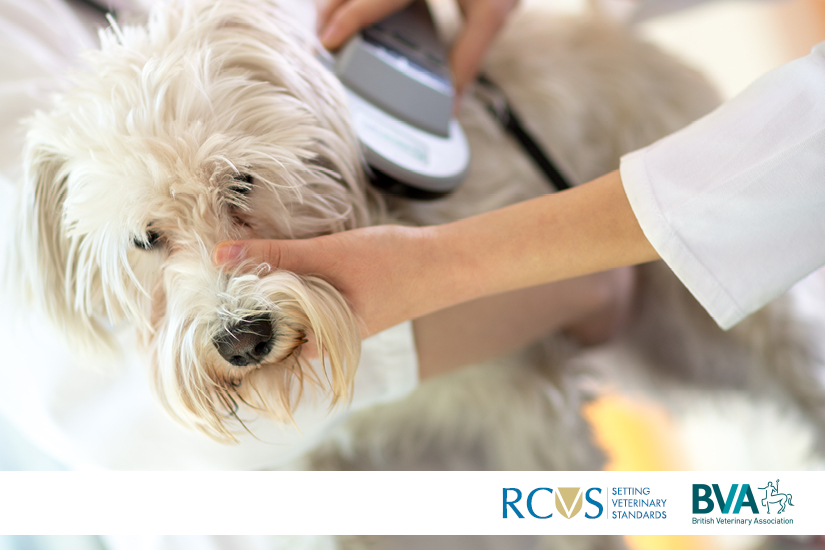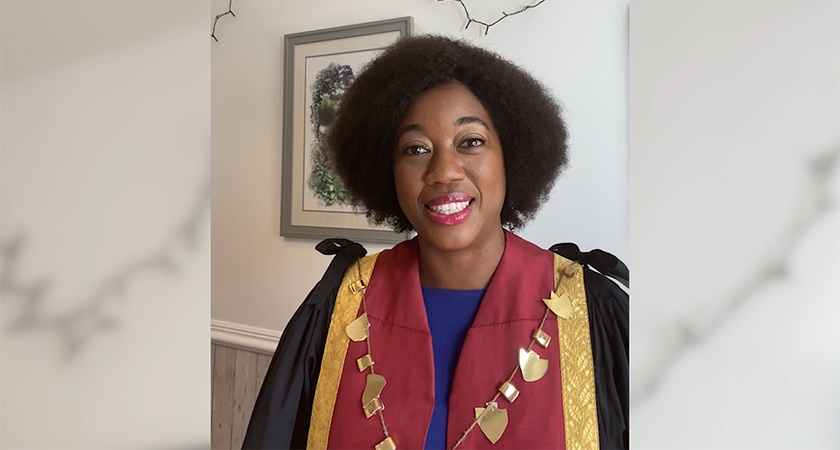Defra approves new approach to strengthen vet guidance on microchip scanning in dogs
20 May 2021
A new guidance-led approach to microchip scanning of dogs ahead of euthanasia, supported by the UK’s leading veterinary organisations, has this week been approved by the Department for Environment, Food and Rural Affairs (Defra).

The guidance follows a public campaign known as ‘Tuk’s Law’ which called for measures to ensure dogs were not euthanised without the microchip database first being checked for a ‘rescue back up’ – a rehoming charity that could take responsibility for the animal.
In consultation with Defra, the RCVS and BVA jointly agreed a way forward for key guidance for veterinary surgeons to be strengthened. The new guidance [see below], which underpins the RCVS Code of Professional Conduct that all UK-practising veterinary professionals must follow, will require veterinary surgeons to scan for a microchip in dogs prior to euthanasia where, in their professional judgement, destruction of the dog is not necessary on animal health or welfare grounds.
In response, the RCVS and British Veterinary Association (BVA) agreed that more could and should be done to prevent occasions where a dog might be needlessly put to sleep, but voiced concerns that a legislative approach could undermine a vet’s clinical judgement, unfairly involve veterinary surgeons in ownership disputes or potential criminality, and leave vets unfairly exposed to financial sanctions.
RCVS and BVA agreed that more could and should be done to prevent occasions where a dog might be needlessly put to sleep, but voiced concerns that a legislative approach could undermine a vet’s clinical judgement, unfairly involve veterinary surgeons in ownership disputes or potential criminality, and leave vets unfairly exposed to financial sanctions.
It will also support existing best practice in terms of discussing alternatives to euthanasia with clients, and give vets flexibility where, in their professional judgment, scanning is not appropriate; this might be if scanning would itself cause a welfare problem, or where a vulnerable client might be involved.
The RCVS Standards Committee recognised the difficulties experienced by veterinary surgeons in dealing with the current microchip database system, but felt that introducing these provisions into the guidance was a more proportionate response than the alternative of legislation with substantial fines. Both the RCVS and BVA were pleased to note that Defra’s new Action Plan for Animal Welfare included a review of existing database systems, with a view to introducing improvements.
George Eustice, Secretary of State for Environment, Food and Rural Affairs, said: “We are a nation of animal lovers and the Government is committed to further strengthening our world-leading animal welfare standards. We have worked closely with the Royal College of Veterinary Surgeons and British Veterinary Association to develop this new guidance, which honours the Tuk’s law principles by requiring vets to scan the microchips of healthy dogs to help ensure they are not put down unnecessarily.”
 RCVS President Dr Mandisa Greene MRCVS (pictured) said: “We are grateful to Defra for helping find a workable solution to a challenging problem that will support animal welfare while underpinning the central role of a veterinary surgeon’s judgement, in what is often a very difficult moment for both the client and the vet. We are confident that our new guidance will significantly reduce any risk of unnecessary and unwanted euthanasia, while continuing to help veterinary surgeons help animals under their care to the best of their abilities.”
RCVS President Dr Mandisa Greene MRCVS (pictured) said: “We are grateful to Defra for helping find a workable solution to a challenging problem that will support animal welfare while underpinning the central role of a veterinary surgeon’s judgement, in what is often a very difficult moment for both the client and the vet. We are confident that our new guidance will significantly reduce any risk of unnecessary and unwanted euthanasia, while continuing to help veterinary surgeons help animals under their care to the best of their abilities.”
BVA Senior Vice President Dr Daniella Dos Santos MRCVS said: “One of the most important jobs as a vet is having those difficult conversations with clients about euthanasia where we talk through all the options that are in the animal’s best interests. But where the vet doesn’t consider that euthanasia is necessary, the new guidance clearly sets out the steps we need to take. We support this constructive approach that addresses the campaigners’ concerns without undermining veterinary judgement.”
New guidance
The following updated guidance has been incorporated into Chapter 8 (para 8.9) and Chapter 29 (paras 29.25 – 29.27) of the supporting guidance to the RCVS Code of Professional Conduct.
- There may be circumstances where a request is made by a client for the destruction of a dog, where in the clinical/professional judgement of the veterinary surgeon destruction of the dog is not necessary, for instance where there are no health or welfare reasons for the dog to be euthanised.
- In these circumstances, before carrying out the request for euthanasia, the veterinary surgeon should scan the dog for a microchip and check the relevant database if a microchip is found.
- Clients may have a contract with the shelter from which they acquired the dog such that it can be returned to that shelter, and that it may be appropriate to discuss this with them prior to euthanasia. Alternatively, there may be another individual willing to take responsibility for the dog (who may be named on the microchip database), and this may also be discussed with the client.